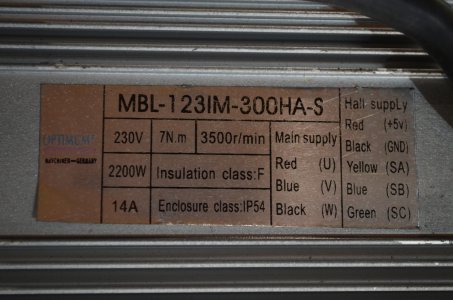- Joined
- Mar 31, 2014
- Messages
- 607
I'm guessing you can't just pull the controller off of the mill the motor came off of? The easiest thing to do would be to find a replacement driver for that motor. I am guessing it would be cheaper than a VFD in any case.
I do have the original Controller, but that's the thing I'm not sure what went wrong, Novakon wanted to charge me $100 plus the shipping to check it out, after the outstanding service I had received up until that point I past on the offer, died on the 4th piece, wonderful...!
Please excuse my terminology if it's off electronics just doesn't stick in my head, I looked around at what others had done and decided to invest the ($100 plus shipping) into a replacement motor, 3 phase and the board with a VFD.
Thank you for the advice, I'll check into this.
Don


